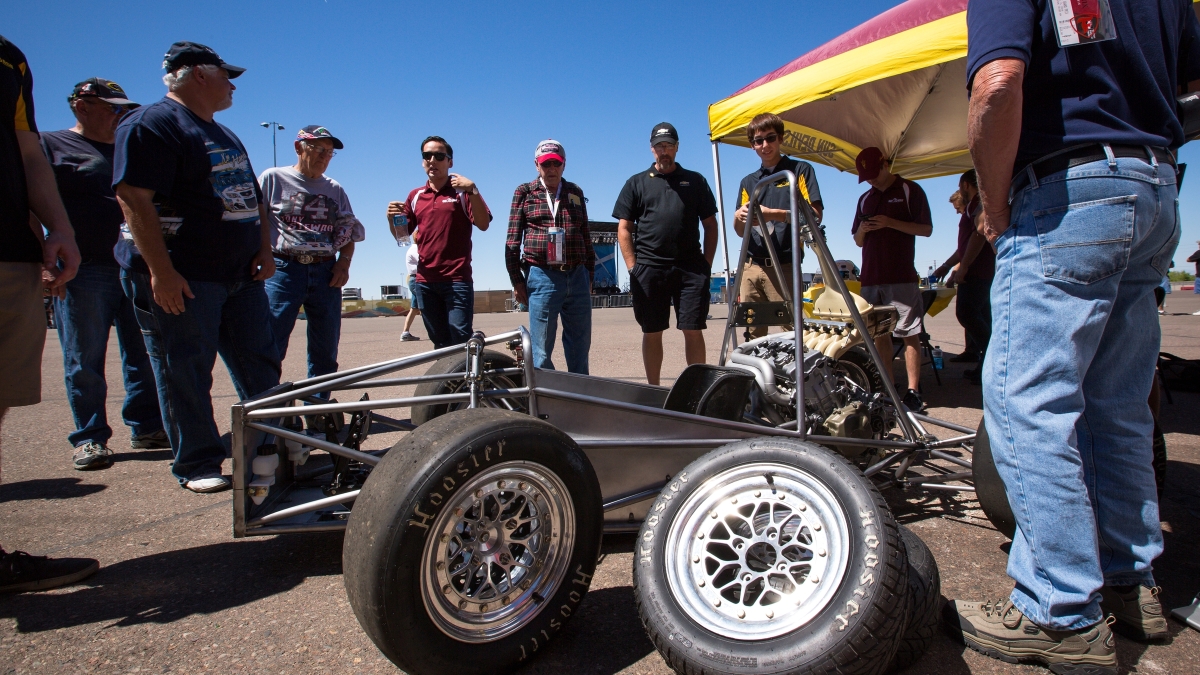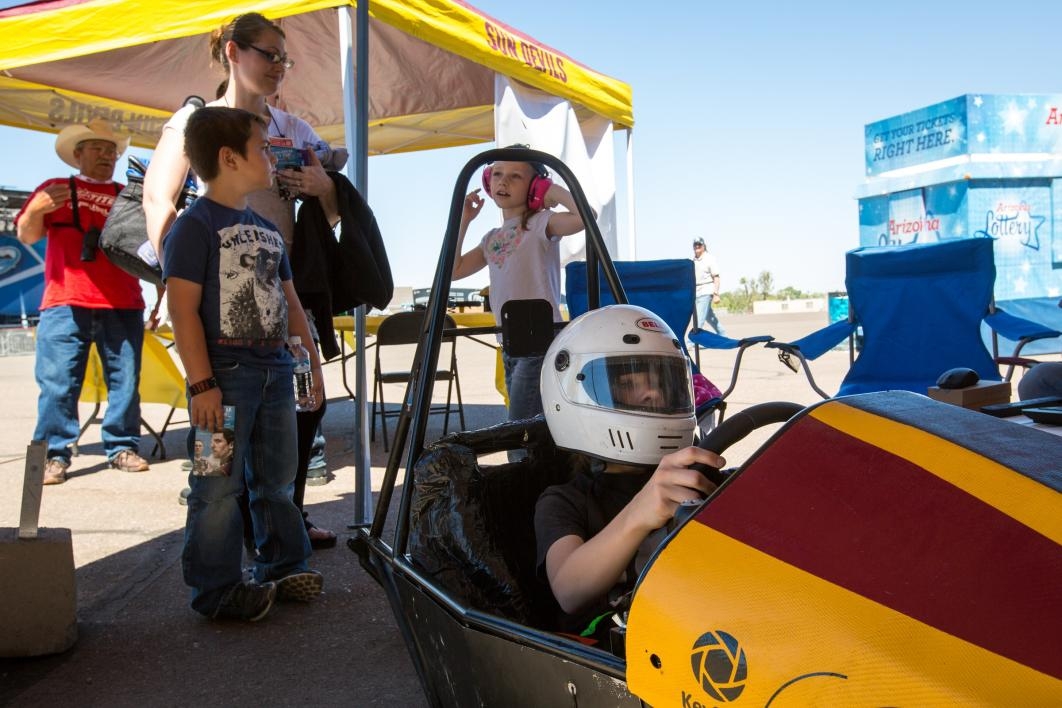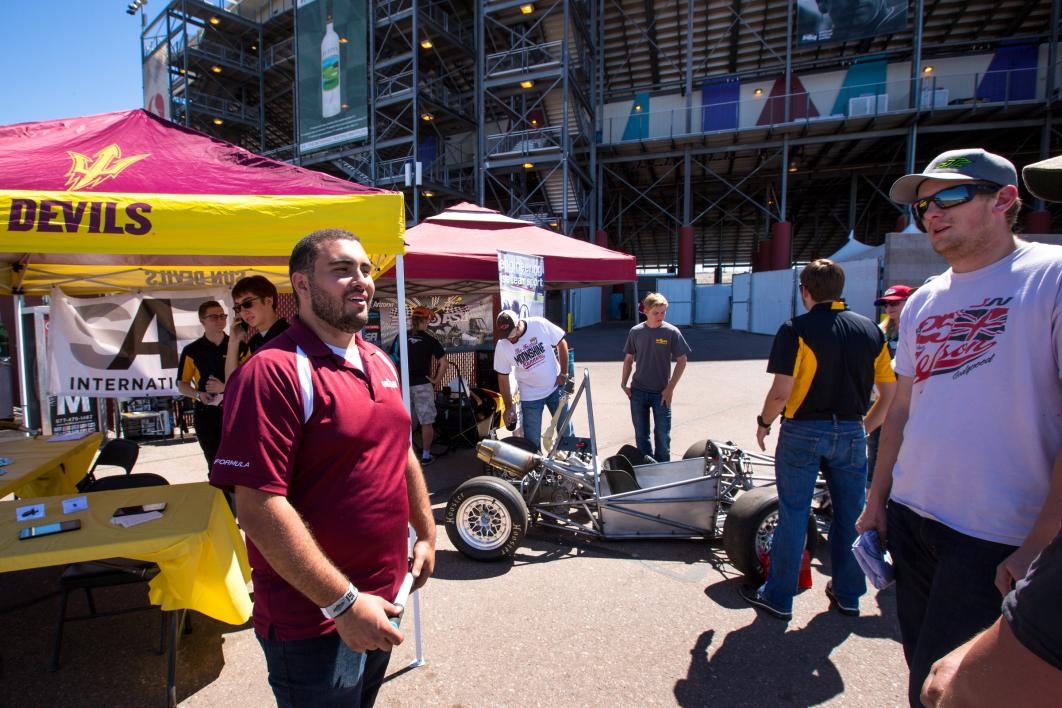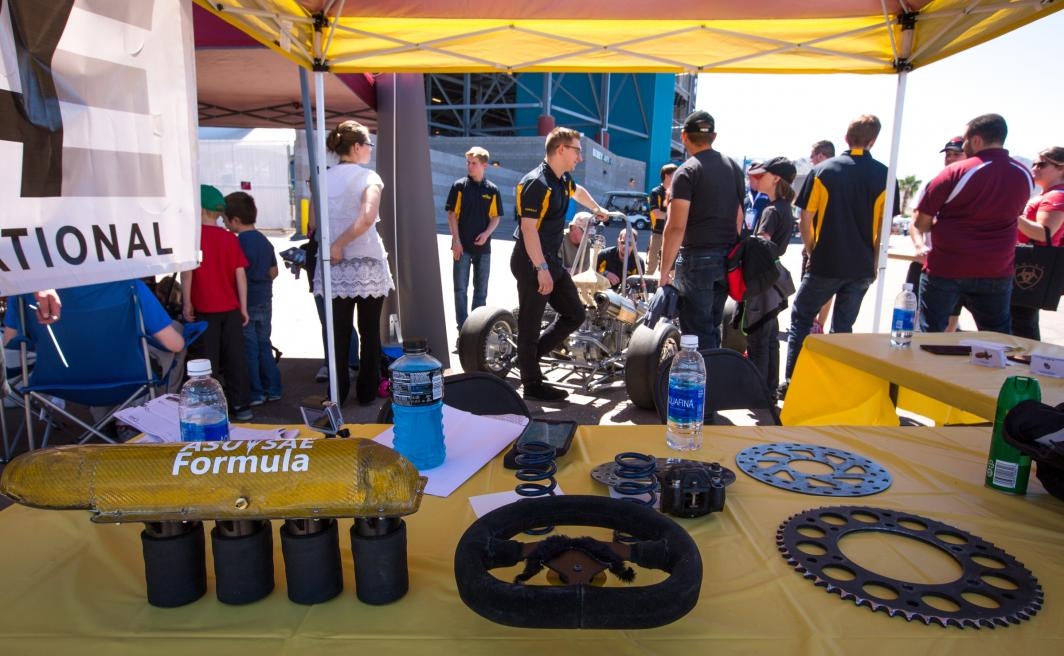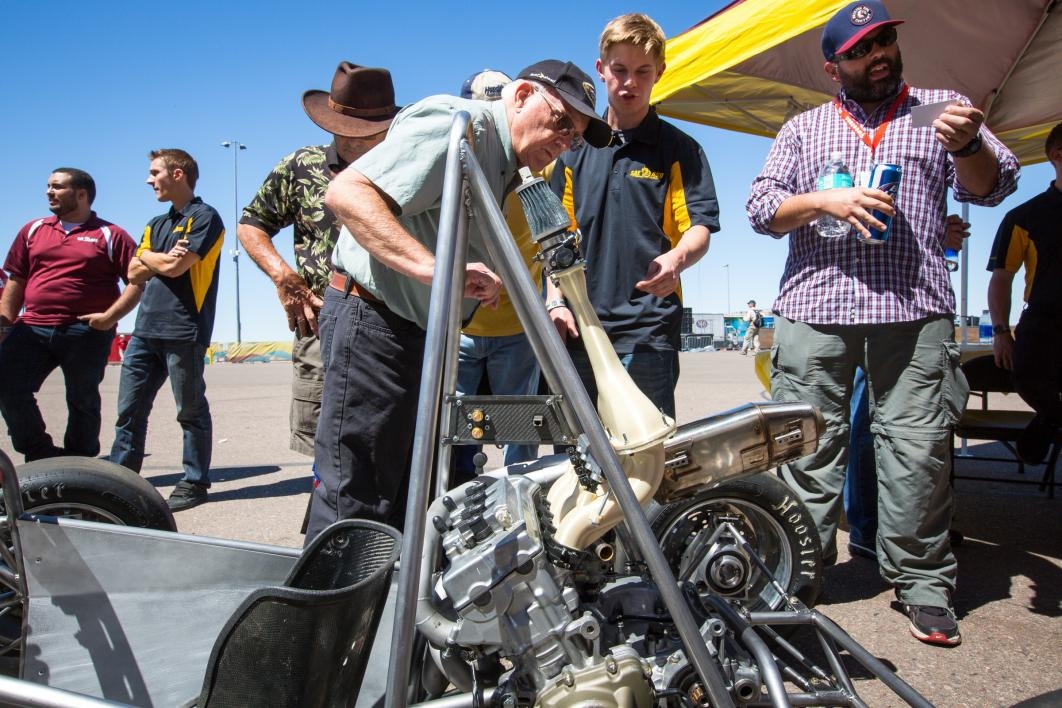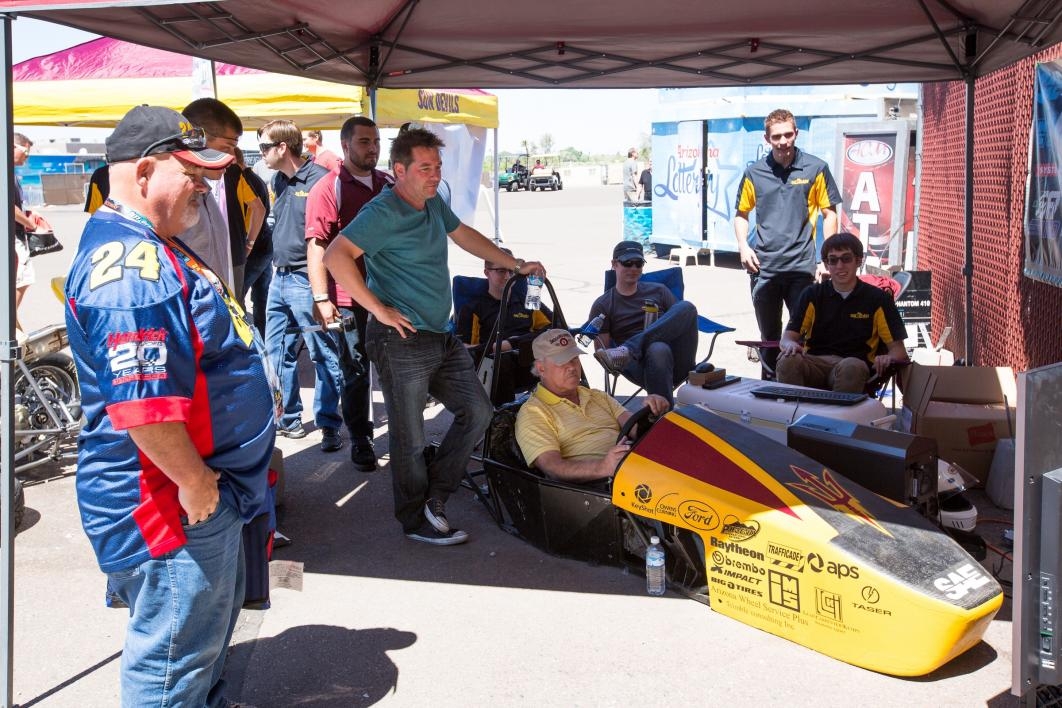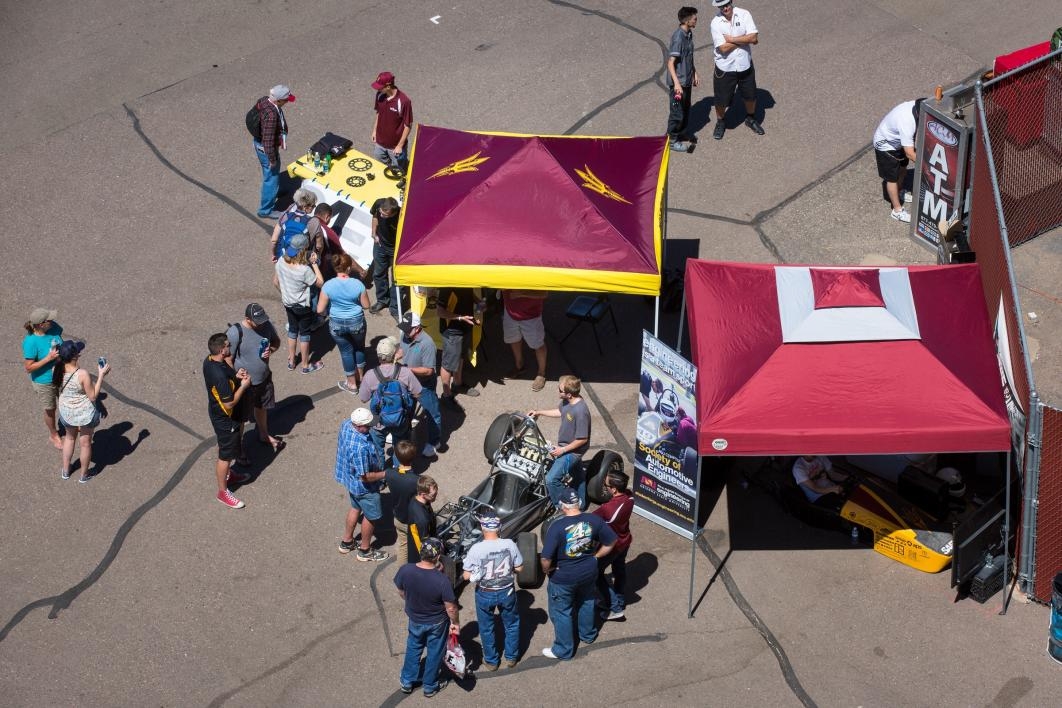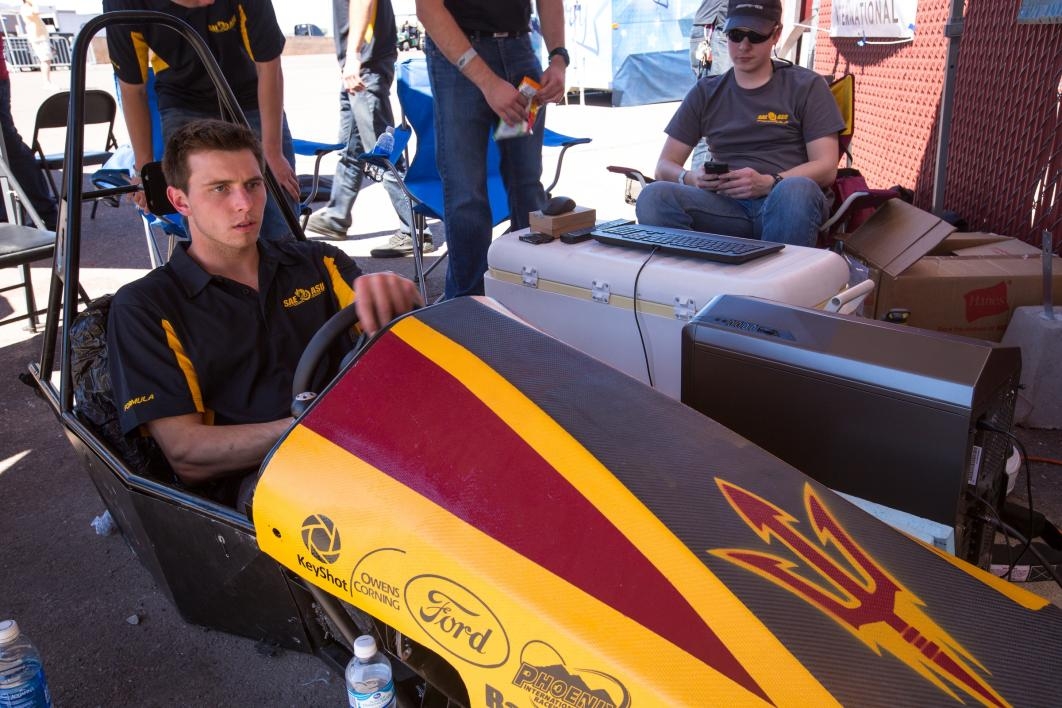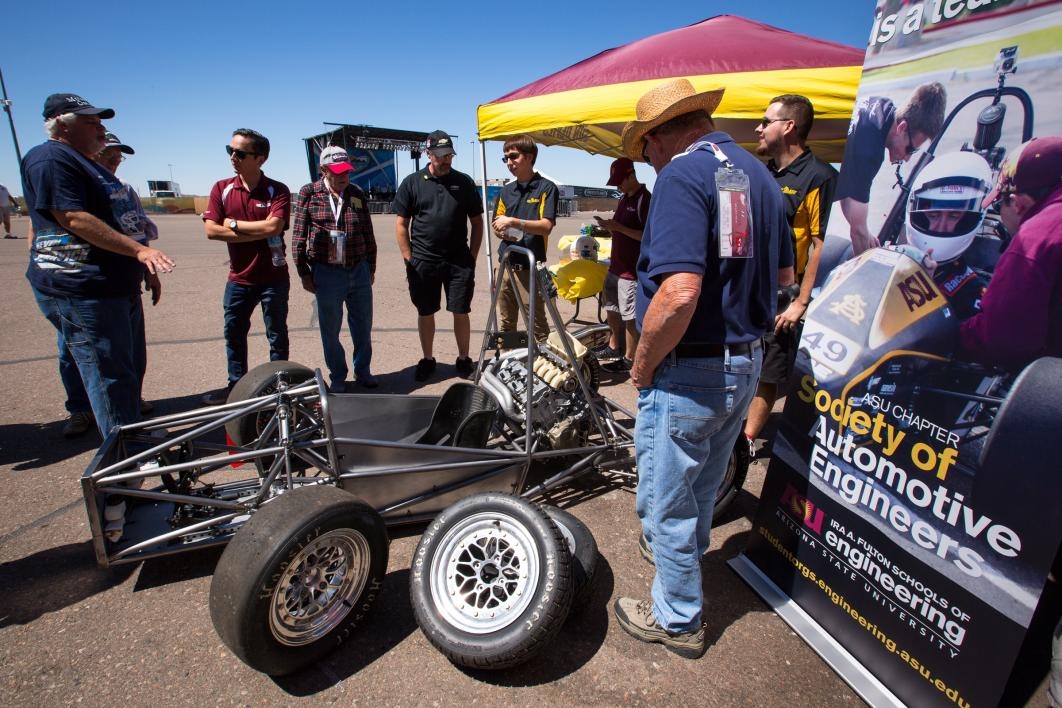Editor’s note: This is the latest installation in a yearlong series about ASU's Formula SAEFormula SAE is a student design competition organized by the International Society of Automotive Engineers (now known as SAE International). team. Find links to previous stories at the end of this article.
Well, they didn't have a completed car to do a pace lap, but the student engineers building a Formula-style car for competition in Nebraska did make it to Phoenix International Raceway this weekend.
Motorsports fans were drawn to the club's tents at PIR, where their in-progress car was displayed, along with a race simulator that drew participants young and old.
After the moment of respite, it's back to the workshop for these students, who have a race car to finish and test before the national competition in June.
Previous stories in this series:
Oct. 14: Tempe Drift: How an underdog student engineering team is building a race car from the ground up.
Nov. 4: Racing time and money to build a fast car.
Dec. 10: Braking bad: Pressure is on for ASU student engineers building race car
Dec. 17: No brake: ASU team powers through to edge closer to race car
Feb. 1: Coming into the home stretch
March 8: Starting to look like a car
March 29: One step closer to PIR
March 31: Going full throttle for PIR
More Science and technology
Extreme HGTV: Students to learn how to design habitats for living, working in space
Architecture students at Arizona State University already learn how to design spaces for many kinds of environments, and now they can tackle one of the biggest habitat challenges — space architecture…
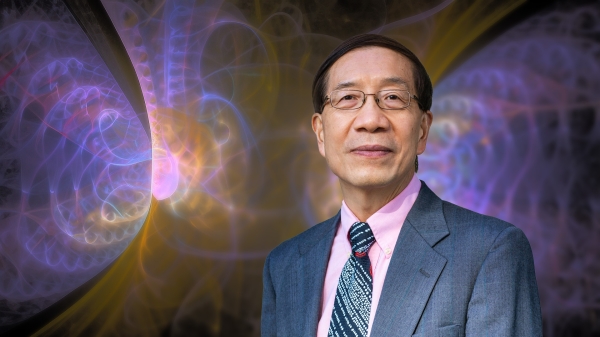
Human brains teach AI new skills
Artificial intelligence, or AI, is rapidly advancing, but it hasn’t yet outpaced human intelligence. Our brains’ capacity for adaptability and imagination has allowed us to overcome challenges and…
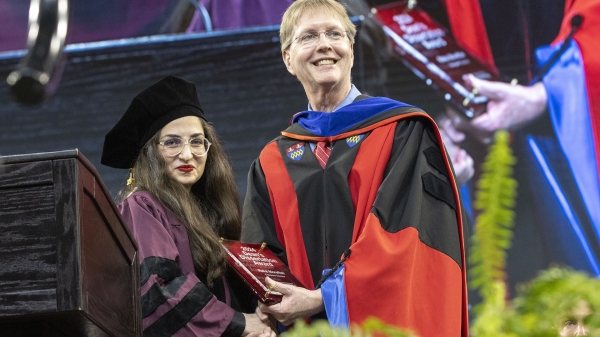
Doctoral students cruise into roles as computer engineering innovators
Raha Moraffah is grateful for her experiences as a doctoral student in the School of Computing and Augmented Intelligence, part of the Ira A. Fulton Schools of Engineering at Arizona State University…
